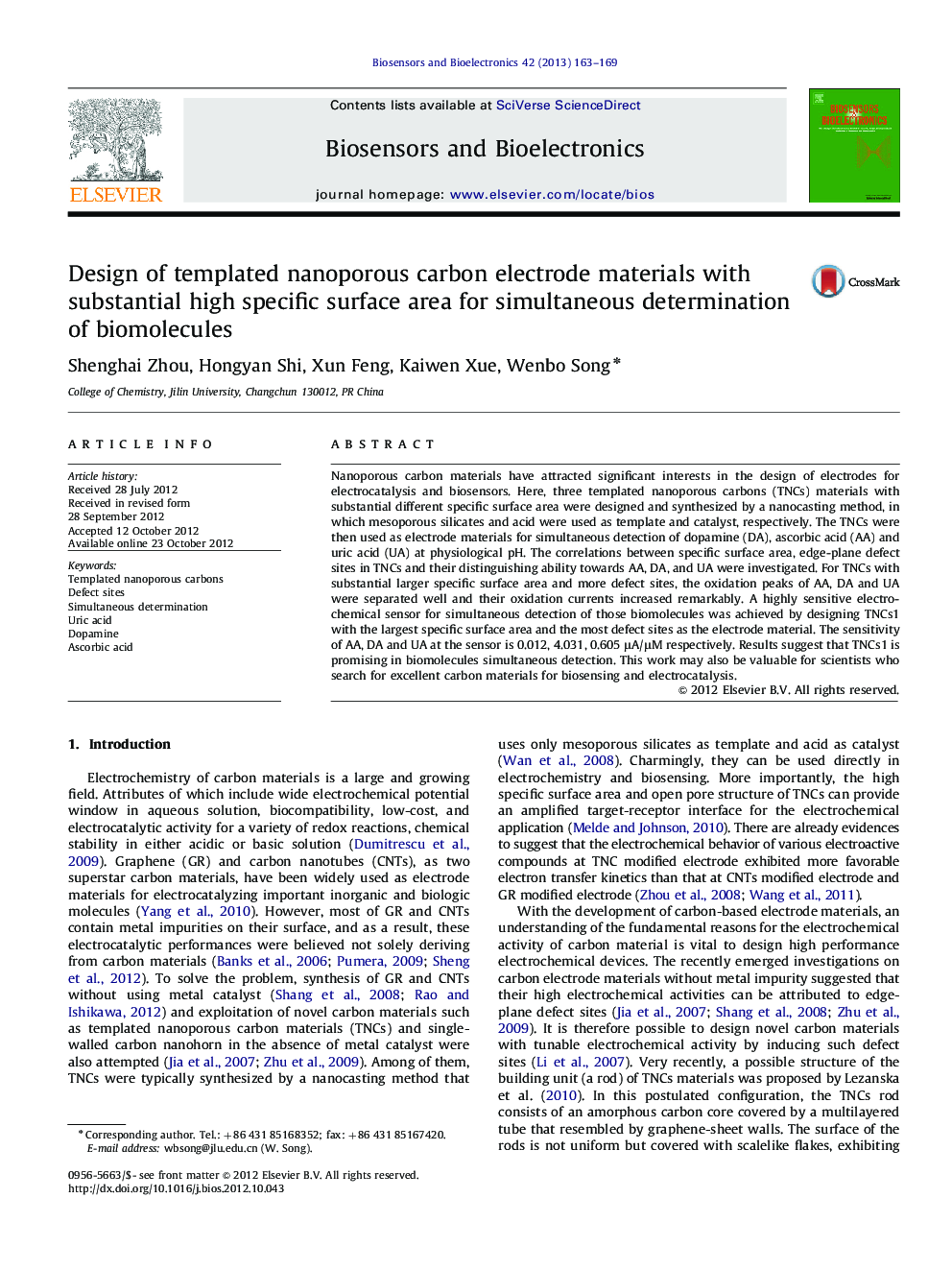| Article ID | Journal | Published Year | Pages | File Type |
|---|---|---|---|---|
| 867089 | Biosensors and Bioelectronics | 2013 | 7 Pages |
Nanoporous carbon materials have attracted significant interests in the design of electrodes for electrocatalysis and biosensors. Here, three templated nanoporous carbons (TNCs) materials with substantial different specific surface area were designed and synthesized by a nanocasting method, in which mesoporous silicates and acid were used as template and catalyst, respectively. The TNCs were then used as electrode materials for simultaneous detection of dopamine (DA), ascorbic acid (AA) and uric acid (UA) at physiological pH. The correlations between specific surface area, edge-plane defect sites in TNCs and their distinguishing ability towards AA, DA, and UA were investigated. For TNCs with substantial larger specific surface area and more defect sites, the oxidation peaks of AA, DA and UA were separated well and their oxidation currents increased remarkably. A highly sensitive electrochemical sensor for simultaneous detection of those biomolecules was achieved by designing TNCs1 with the largest specific surface area and the most defect sites as the electrode material. The sensitivity of AA, DA and UA at the sensor is 0.012, 4.031, 0.605 μA/μM respectively. Results suggest that TNCs1 is promising in biomolecules simultaneous detection. This work may also be valuable for scientists who search for excellent carbon materials for biosensing and electrocatalysis.
► TNCs materials with different specific surface area and defect sites were designed. ► Catalytic activities of the TNCs were correlated with the amount of defect sites. ► TNCs with more defects indicate a satisfied property in oxidation of AA, DA and UA. ► A sensitive sensor without interference in detection of AA, DA and UA was proposed.
